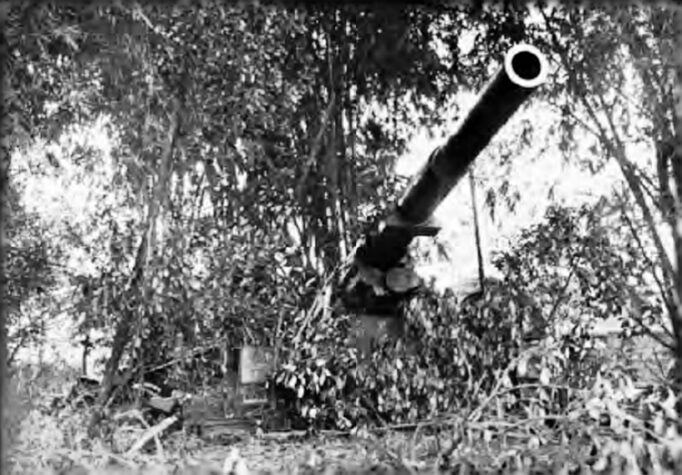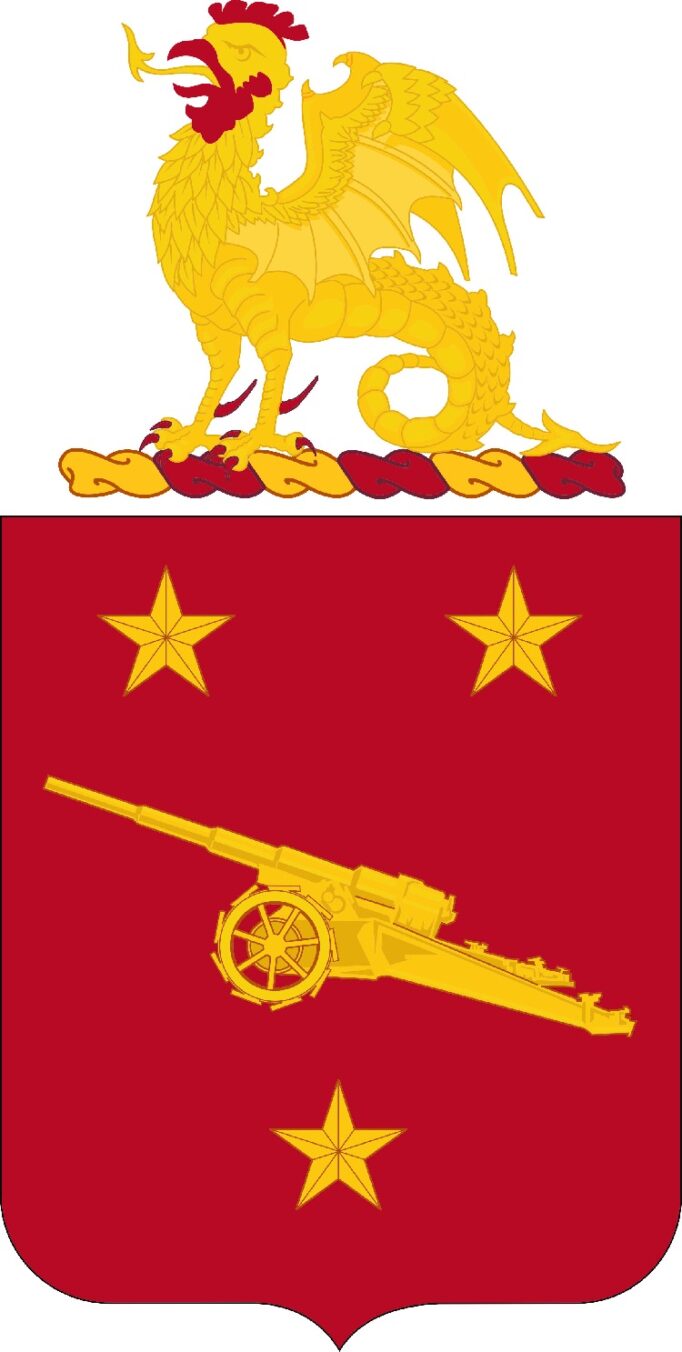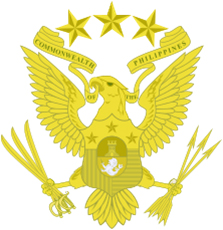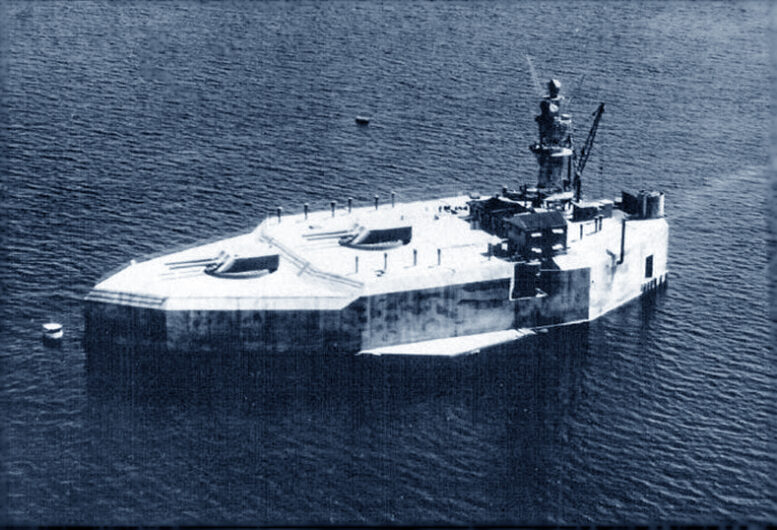The American Era: Coastal Defense Fortifications Take Shape
The importance of Corregidor Island in the military complex dates back as far as the beginning of the Spanish Colonial period during the 1500’s, as Spanish Galleons used to anchor at the Island or on other nearby islands. Apart from being a naval anchorage, it was an outpost to alert Manila and adjacent Spanish positions of incoming threats from the sea.
As years progressed, Corregidor was an anchorage for Limahong’s pirates, the Royal Navy during the British Invasion of Manila, Dutch Pirates, and the naval actions during the Spanish-American War were the Spanish Garrison at El Fraile Island fired at the ships of Admiral George Dewey, though unfortunately out of range.
When the Philippines became an American Colony, Fortifications on the Island were begun, gun emplacements, and the latest calibre of that era were in place until after WWI.
Apart from the amenities and storage buildings for the families of the garrison and ammunition to withstand a six-month siege and seaborne attack, further fortifications and guns were added as the winds of war were embracing the Pacific. The 20TH century would also see the demise of fortifications with the advent of the airplanes rendering the guns vulnerable to aerial attacks.
However, looking into the Coastal and Beach Defense perspective, Fortress Corregidor along with a substantial air and naval support could have turned the tide or further delayed the Japanese advance at that time.
Coastal Defenses of Manila Bay and Corregidor
On 11-April-1902, Caballo, Carabao, Corregidor, El Fraile and Grande Islands were declared Military Reservations. In 1905, construction of the Fortifications had begun.
The primary objective of constructing the fortifications at Manila Bay was to provide protection to the U.S. Navy Asiatic Fleet Headquarters in Subic Bay, the City of Manila, and the ports and harbors of Manila and its adjacent provinces.
Fort Mills in Corregidor, Fort Hughes in Caballo Island, Fort Frank In Carabao Island, Fort Drum in El Fraile, and Fort Wint in Grande Island, Subic Bay, became part of the Philippine Coast Artillery Command under MGEN George F Moore, US Army.
FORT MILLS / Corregidor:
- Hearn/1/12″/BCLR/1921
- Smith/1/12″/BCLR/1921
- Way/4/12″/M/1910/
- Geary/8/12″/M/1910
- Cheney/2/12″/DC/1910
- Wheeler/2/12″/DC/1910
- Crockett/2/12″/DC/1910
- Grubbs/2/10″/DC/1911
- RJ 43/1/ 8″/BC/1942
- Morrison/2/ 6″/DC/1910
- Ramsey/3/ 6″/DC/1911
- James/4/ 3″/P/1910
- Keyes/2/ 3″/P/1913Cushing/2/ 3″/P/1919
- Hanna/2/ 3″/P/1919
- Martin/2/155 mm/PM
- Hamilton (South)/3/155 mm
- Kysor (North)/2/155 mm
- Rock Point/2/155 mm
FORT DRUM / El Fraile Island:
- Wilson/2/14″/TM/1918
- Marshall/2/14″/TM/1918
- Roberts/2/ 6″/CM/1918
- McCrea/2/ 6″/CM/1918
- New Hoyle/1/ 3″
FORT HUGHES / Caballo Island:
- Woodruff/1/14″/DC/1914
- Gillespie/1/14″/DC/1914
- Craighill/4/12″/M/1919
- Leach/2/ 6″/DC/1914
- Fuger/2/ 3″/P/1914
- Willaims/2/155 mm
- Hooker/1/155 mm
- Sunset/4/155 mm
- Stockade/2/155 mm
- Monja/2/155 mm
- Concepcion/3/155 mm
FORT WINT /Grande Island, Subic Bay:
- Warwick/2/10″/DC/1910
- Woodruff/2/ 6″/DC/1910
- Hall/2/ 6″/DC/1910
- Flake/4/ 3″/P/1910
- Jewell/4/ 3″/P/1910
- unnamed/4/155 mm//Olongapo
FORT FRANK / Carabao Island, Cavite:
- Greer/1/14″/DC/1913
- Crofton/1/14″/DC/1913
- Koehler/8/12″/M/1913
- Hoyle/2/ 3″/P/1913
- Frank/4/155 mm
These were the gun details in the aforementioned Forts (Coast Defense Study Group; used with permission, 04-July-2021). Coastal Defense Actions in the Philippines during WW II:
Japanese Landing at Lingayen (22-December-1941) and Filipinos in Coastal Defense at Corregidor (May 1942)
As war finally engulfed the Philippines on 08-December- 1941, a series of setbacks in the conflict were encountered by the Filipino and American Forces early on, thus War Plan Orange-3 was put into effect on 24-December-1941 with the arrival and landing of the Japanese 14TH Army off the Coast of La Union and Pangasinan.
War Plan Orange-3 was a fall back plan for the United States Army Forces in the Far East (USAFFE) with the advent of failing to stop and neutralize the Japanese Invasion Force off the country’s coast and proceed to Bataan to hold the line.
Nevertheless, Filipino units engaged the Japanese Forces despite overwhelming odds and disparity in weaponry. Worth noting is a Filipino Beach Defense Unit that used its 0.50 calibre machine guns on the incoming Japanese troops.
The counter fire actions made by the Philippine Scouts 91ST and 92ND Coast Artillery Regiment and that of the Philippine Army’s 1ST and 2ND Coast Artillery were to counter battery fire from the Japanese guns in Mariveles, Bataan.
The exploits of the Filipino officer and Crew of Battery B assigned at Battery James in Fort Mills, Corregidor are worthy of emulation, that such men fought and were on our side.
Unknown and Known Filipinos assigned to Coastal and Beach Defense during Japanese Invasion in December 1941
On the night of 21-December-1941, three Japanese Naval Convoys landed off Lingayen Gulf carrying the bulk of the Imperial Japanese Army of General Masaharu Homma.
The convoy was composed of three divisions from Formosa along with a Tank and Artillery Regiment.

86TH Field Artillery 155mm. The actual photograph of one of the 155mm positioned in Dagupan under the 86TH Field Artillery. Photo courtesy of Mr. Tony Feredo of the Coast Defense Study Group (CDSG) who provided the image to the author on July 2020.
As the landings progressed on 22-December-1941, a unit of the Philippine Scouts, the 86th Field Artillery which had a Battery of two 155mm guns engaged the southern portion of the Japanese Invasion Force, though unfortunately no damage or hit was inflicted on the Japanese forces.
Despite the overwhelming force of the Japanese who envisioned a 50-day Campaign for the Philippines would encounter setbacks on their timetable. On one particular landing area in Luzon, Japanese troops were met by a barrage of 50 calibre machine gunfire from Filipino Troops.
With the sheer speed of the enemy advances, the War Plan Orange-3 was put in effect ordering all USAFFE Forces in Luzon to fall back to the Province of Bataan.
Early on the defense plan, if the Combined Filipino-American Force were unsuccessful in halting the Japanese Landing at the Coast, delaying actions would be made until all USAFFE Forces were in Bataan to take a stand and await help coming from the mainland United States.

21ST Field Artillery. Actual photograph of the Officers and Crew of the 21st Field Artillery, Philippine Army on the Lingayen Beachhead. Photo courtesy of Mr Tony Feredo of the Coast Defense Study Group (CDSG) who provided the image to the author on July 2020.
The 21ST Field Artillery, a unit of the 21ST Infantry Division of the Philippine Army under the USAFFE, was mobilized on 18-November-1941, and was in action from December 1941 to 09-April-1942. The Division’s area of responsibility covers La Union, Nueva Ecija, Tarlac and Pangasinan.
Filipino Defenders at Fort Mills
During the Siege of Corregidor or Fort Mills from December 1941 to May 1942, the One Gun Battery was commanded by Filipino 1LT AMADEO S GARCIA of the Philippine Army. Along with 42 of his men, they all bore the brunt of the Japanese onslought but prevailed to continue firing the 4-3 inch calibre guns of Battery James.
1LT Amadeo S Garcia, Philippine Army of B Company, 1st Coast Artillery, was attached to the 91st Coast Artillery of the Philippine Scouts, one of the primary units involved in the Beach Defense of Corregidor.
The 3-inch guns had already suffered enough damage but continued to perform its mission as a counter battery to Japanese artillery fire coming from Bataan.
On 18-December-2009, the Philippine Coast Guard and the Corregidor Foundation Inc. built a historical marker in honor of 1LT AMADEO S Garcia and his men.
As backgrounder, Battery James was named after US Army LT John James of the 8th Infantry who was killed in an ambush along with his men while assigned in the Province of Leyte in 1906.
Units in the Beach and Coastal Defenses of Manila Bay:

91ST Coast Artillery Regiment Coat of Arms, 1928. Photo credit: U.S. Army.

The 91ST Coast Artillery Regiment was formed on 30-November-1930 for harbor defense with 8 Batteries that were assigned to Fort Mills, Fort Frank, and Fort Hughes. They had both Filipino and American Officers who were Graduates of the US Naval Academy in Annapolis and the US Military Academy in West Point.The Batteries were either led by an American or Filipino Officer with a Filipino Senior NCO.

92ND Coast Artillery Regiment Coat of Arms, 1927. Photo credit: U.S. Army.
The 92ND Coast Artillery Regiment was formed on 01-July-1924 for harbor defense with 7 Batteries that were assigned mostly to Fort Mills and Fort Frank. The Regiment had American Officers and Filipino Non-Commissioned Officers and Enlisted Personnel. The 92ND had a primary weapon employed, the 155mm M1918 GPF, which was similar to the French M1917 in towed version.

1ST and 2ND Coast Artillery Regiment, Philippine Scouts. Photo credit: U.S. Army.
1st and 2nd Coast Artillery, Philippine Army
The Two Filipino Coast Artillery Units for harbor defense had a combined force of 600 Philippine Army personnel then in training, although operational control was with the Philippine Scouts Coast Artillery Regiment.
Adjunct Beach and Coastal Defense Elements of Corregidor
72 Anti-Aircraft Units were assigned to 13 of 23 Batteries, as well as the remaining Naval Forces of the United States Navy, the Philippine Offshore Patrol (OSP), the 4TH Marine Regiment, and 35 Electronic Controlled Sea Mine Groups.
SOURCES:
The American Era: Coastal Fortifications Takes Shape:
Charles M. Davis Hubbard Jr., Corregidor in Peace and War, Collis H. University of Missouri Press, Columbia and London, 2006. ISBN 978-0-8262-1712-7.
Mark A. Berhow & Terrance C. McGovern, American Defenses of Corregidor and Manila Bay 1898–1945 (Fortress) (2003), Osprey Publishing.
Bill Sloan & Michael Prichard, Undefeated: Americas Heroic Fight for Bataan and Corregidor (2012), Simon & Schuster.
Eric Morris, Corregidor: The End of the Line (1982).
Donald J Young, The Battle of Bataan, McFarland Pub ISBN-13: 978-0786441808
Louis Morton, The Fall of the Philippines: The War in the Pacific, US Army in World War Two Series (Green Books).
On-Line Sources:
https://cdsg.org/the-harbor-defenses-of-manila-and-subic-bays-the-philippines/?fbclid=IwAR2cBBrPGbS6GWoZPw1BZjAFl_N9QwXPchPepepGFZfZXhaFhm3jqEZSa4s accessed 28-June-2021.
https://www.palawandays.com/product/corregidor-island-tour-manila/ accessed 02-August-2020.
https://corregidor.proboards.com/thread/295/fort-hughes-caballo-island-march?page=2 accessed 08-July-2021.
http://philippine-sailor.net/2018/04/03/fort-frank-construction/ accessed 02-AugusT-2020.
https://www.anastasiaharman.com/2020/07/15/napoleon-boudreau/ accessed 12-July-2021.
Coastal Defense Actions in the Philippines during WW II:
The Philippine Army: The First 100 years, 1997, Headquarters Philippine Army.
Cesar P Pobre, History of the Armed Forces of the Filipino People, New Day Publishers, 2000.
Image of 155mm Gun (actual photograph Courtesy of Mr Tony Feredom of the Coast Defense Study Group) provided to the author dated 20- July-2020.
Map Showing Japanese Landings and advance Photograph http://www.army.mil/cmh-pg/brochures/pi/PI.htm from (Public Domain) accessed 27-June-2021.
Image of 21st Field Artillery Regiment (actual photograph provided to the author dated July 2020 by Mr Tony Feredo, Coast Defense Study Group)
Image of pre-war photograph of a Philippine Scout Beach Defense Unit with a 155mm Gun in Pangasinan fromhttp://1.bp.blogspot.com/HLsEeX6SBrs/UQVeGPmxxKI/AAAAAAAAUFo/vgDqBgbtUGI/s1600/ps23-scoutartillery.jpg provided by Mr Anthony Faustino from https://www.tapatalk.com/groups/defense_philippines/towed-howitzers-acquisition-project-for-the-pa-t5087-s50.html?fbclid=IwAR3HdHOX3v4dsDXOuyAU00eGVmRHWUQI4nQraFJ7M7g0Lz0oGavs_Kx0eH4 accessed 03-July-2021.
Unknown and Known Filipinos assigned to Coastal and Beach Defense during the Japanese Invasion in December 1941:
https://corregidor.proboards.com/thread/1128/battery-james?page=2 accessed 07-July-2021.
Exchange of Information between the author and Mr Tony Feredo of CDSG dated August 2020 and July 2021 .
Further details on Battery James, https://corregidor.proboards.com/ accessed 07-July-2021.
Units in the Beach and Coastal Defense of Manila Bay:
Louis Morton, The Fall of the Philippines: The War in the Pacific, US Army in World War Two Series (Green Books), https://corregidor.org/chs_munson/91st.htm
George Munson, The Best of the Best 91st Coast Artillery Corps, accessed 08-July-2021
